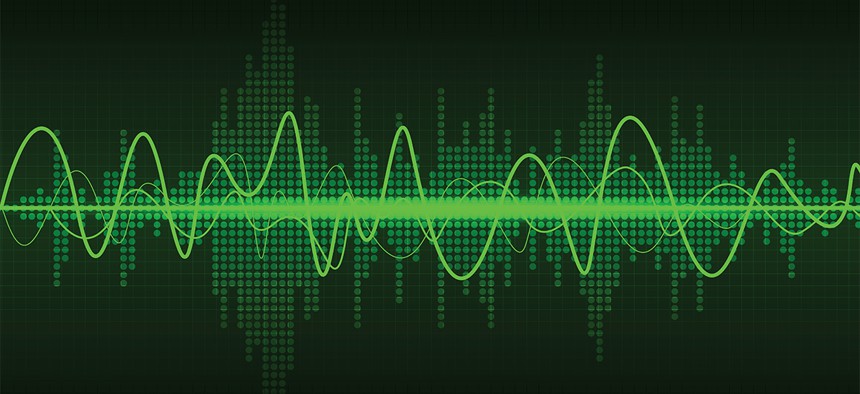How Audio Analytics Could Help Curb Government Threats

natrot/Shutterstock.com
Complying with policies on audio monitoring is simpler than many agencies think.
Richard Brent is CEO of Louroe Electronics and Security Industry Association board of directors member.
Although technological innovation is at an all-time high, so is the vulnerability of every government agency, facility and operation. Officials and chief security officers are looking for new cost-effective solutions to enhance their physical layers of security.
One technology gaining more prominence in the security and federal space is audio monitoring.
Security solutions with audio and audio analytics have become important resources for security staff. Audio analytics refers to the capture and classification of sounds that indicate a threat or precarious situation. Common examples include glass break and car alarm detectors. Aggression detection software, which is an excellent deterrence tool for curbing workplace violence, is a more recent technology development in the market.
Perhaps the most valuable audio analytics solution available today for agencies is the gunshot detector. In situations where a security breach has occurred and seconds can be mean life or death for innocent civilians, a gunshot detector can shorten response time. When a gunshot detector identifies the sound of a firearm, it immediately notifies law enforcement and first responders, allowing them to respond quickly.
Audio can easily be integrated into any existing security system. However, many agencies refrain from deploying it because they question its legality. The law currently indicates that as long as there is no expectation of privacy, such as in a public place like the National Mall, the recording is authorized.
However, the great benefit about deploying an audio analytics solution is that it supports privacy. Audio detectors only analyze frequency and sound patterns. They do not identify language or words. Best of all, a sound detector does not have to record but can be programmed to only record when a specific sound is made such as a gunshot.
Complying with policies on monitoring is simpler than many agencies think.
For agents who are just looking to enhance their current surveillance with a microphone, a simple way to remove the expectation of privacy is through signage. Typically, this is done through posting a notice that states that monitoring is taking place in the area.
When it comes to securing premises, government agencies desire two things: shortened response time and optimal situational awareness in the event of a threat. By integrating audio into a current surveillance system, agents gain access to additional evidence, verification and real-time response.
If a two-way audio solution (such as a loudspeaker with a microphone) were to be connected with a camera on a utility company’s power plant site, a monitor in the control room could engage a suspect in the real-time, saying: “Hey! You in the blue shirt. We see you and you are being monitored.” This dialogue can act as a deterrent and discourage the person from inflicting damage on expensive machine equipment.
In the critical infrastructure example, the audio can also capture important information about the site. A recording can provide details, including names, languages spoken and accents, about who trespassed on the property after hours. This evidence can then be very helpful to a law officer that is trying to track a suspect.
Beyond security, audio can also give insight into business operations. Audio feeds have been able to let site managers know if an oil or gas well is not functioning properly or if an employee is misbehaving. In other words, supervisors can use audio to maintain quality control and ensure employee accountability, ultimately driving their organization’s bottom line.
Audio monitoring is also a valuable system because it offers secondary verification. If an inmate in a correctional facility reports a commanding officer verbally harassed him at lunch, the captain can listen to the audio recording and either substantiate or disprove the claim, ultimately avoiding a lawsuit.
Similarly, if an alarm goes off in the middle of the night at the Library of Congress, a central station operator could listen to the live audio feed for sounds to confirm or invalidate the report. This additional checkpoint helps federal agencies avoid false alarms, saving them time and resources. Additionally, an audio-verified alarm will often be treated with higher priority by law enforcement and first responders.
There has and will continue to be risks to this nation’s security and assets. The use of niche, emerging technologies like audio will only continue to grow as agencies strive to deploy the most effective security solutions.
(Image via natrot/Shutterstock.com)






 By
By